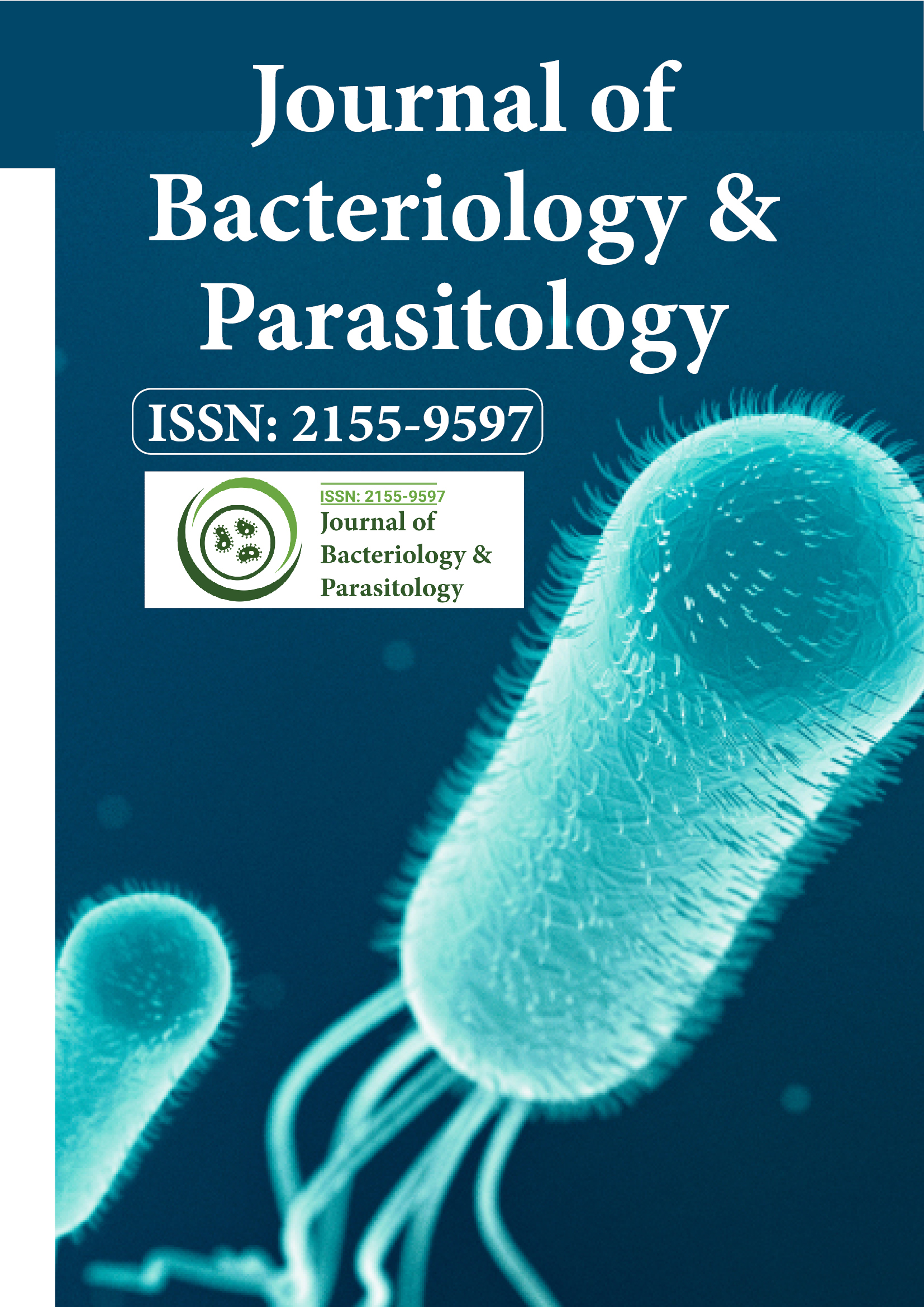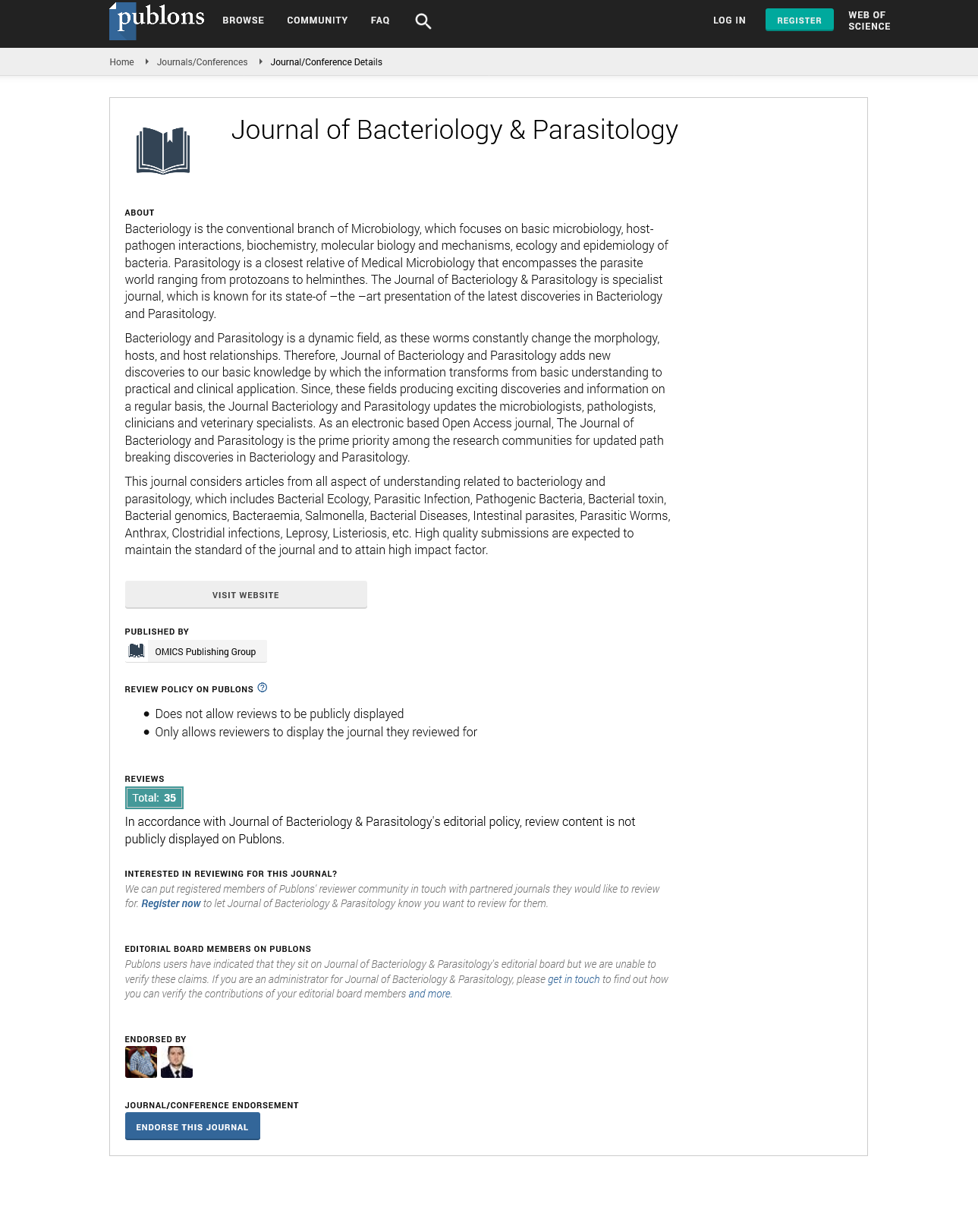Indexed In
- Open J Gate
- Genamics JournalSeek
- Academic Keys
- JournalTOCs
- ResearchBible
- Ulrich's Periodicals Directory
- Access to Global Online Research in Agriculture (AGORA)
- Electronic Journals Library
- RefSeek
- Hamdard University
- EBSCO A-Z
- OCLC- WorldCat
- SWB online catalog
- Virtual Library of Biology (vifabio)
- Publons
- MIAR
- Geneva Foundation for Medical Education and Research
- Euro Pub
- Google Scholar
Useful Links
Share This Page
Journal Flyer

Open Access Journals
- Agri and Aquaculture
- Biochemistry
- Bioinformatics & Systems Biology
- Business & Management
- Chemistry
- Clinical Sciences
- Engineering
- Food & Nutrition
- General Science
- Genetics & Molecular Biology
- Immunology & Microbiology
- Medical Sciences
- Neuroscience & Psychology
- Nursing & Health Care
- Pharmaceutical Sciences
Perspective - (2025) Volume 16, Issue 3
The Role of Gut Microbiota in Bacterial Disease Resistance and Dysbiosis
Javier Lagos*Received: 26-May-2025, Manuscript No. JBP-25-30044; Editor assigned: 28-May-2025, Pre QC No. JBP-25-30044; Reviewed: 11-Jun-2025, QC No. JBP-25-30044; Revised: 18-Jun-2025, Manuscript No. JBP-25-30044; Published: 25-Jun-2025, DOI: 10.35248/2155-9597.25.16.551
Description
Inside the intestines of humans, a vast community of microorganisms coexists with host tissues, contributing to digestion, immune regulation, vitamin production and protection against harmful invaders. When that community remains balanced, many bacterial pathogens fail to establish infection because of competition for nutrients, secretion of antibacterial compounds, and stimulation of host barrier functions. But when imbalance arises through antibiotic use, dietary change, illness, or stress this community may weaken, allowing opportunistic bacteria to grow unchecked.
Normal microbiota in the gut produce short chain fatty acids, help maintain tight junctions between epithelial cells, stimulate mucus production, and occupy binding sites that pathogens might otherwise use. Commensal bacteria may produce bacteriocins or acidic environment that inhibit pathogen growth. For instance, Clostridioides difficile often becomes problematic after broad-spectrum antibiotic therapy reduces competition; its spores germinate and toxins damage colon lining, causing diarrhea. Similarly, overgrowth of Salmonella or pathogenic succeed when resident benign species suppressed.
Diet influences microbiota composition fiber, prebiotic compounds promote beneficial strains; high fat or highly processed foods reduce diversity. Infection or inflammation can further alter balance. Use of proton pump inhibitors, stress or illness can shift pH or transit time, giving advantage to bacteria that tolerate these conditions. Early life exposures birth mode, breastfeeding, environmental microbial exposure shape initial microbiota community structure, laying foundation of resistance or susceptibility later. Restoration of healthy microbiota emerges as part of treatment. Probiotics live organisms given orally can suppress pathogens or reduce incidence of relapse. Fecal microbiota transplantation shows effectiveness in treating recurrent difficile infections though risk and regulation of such treatment require care. Prebiotics and dietary approaches aimed at increasing fiber and fermentable substrates help beneficial species flourish. Reducing unnecessary antibiotic use preserves microbiota integrity.
Diagnosis of dysbiosis involves stool microbiome analysis via sequencing or culture, measuring diversity, abundance of particular groups, metabolic profiling, detection of pathogenic overgrowth or abnormal metabolites. Clinical correlation required altered microbiota may correlate with diarrheal disease, inflammatory bowel disease, susceptibility to infection. Biomarkers such as increased inflammatory markers or disrupted barrier function may accompany dysbiosis.
Beyond gut disease, disturbed microbiota influence systemic effects: metabolic disorders, immune dysregulation, allergies may relate. Bacterial endotoxin translocation across gut barrier during imbalance can trigger systemic inflammation. Studies demonstrate that microbiota influence developing immune system, help train responses to prevent overreaction to benign antigens.
Preventive efforts focus on balanced diet, prudent antibiotic prescription, hygiene that does not sterilize unnecessarily, early exposure to non-pathogenic environmental microbes while avoiding dangerous ones. Public health education, policies to reduce antibiotic use in livestock, food safety, water sanitation all help maintain microbial ecosystems. Clinical practice guidelines increasingly consider impacts on microbiota when choosing treatments.
Conclusion
Scientific research is expanding: mapping microbiome in different populations, understanding functions of less abundant species, exploring metabolome, understanding how microbial communities respond to perturbation. Novel therapeutics such as defined microbial consortia, engineered microbes, or small molecules targeting pathogenic overgrowth under development. Insight into microbial community resilience and response times enhances capacity to restore balance. Thus, gut microbiota represent a form of natural defense that when preserved, reduces burden of bacterial disease. Interventions that support microbiota health may decrease frequency and severity of infections, improve immune status and overall health outcomes.
Citation: Lagos J (2025). The Role of Gut Microbiota in Bacterial Disease Resistance and Dysbiosis. J Bacteriol Parasitol. 16:551.
Copyright: © 2025 Lagos J. This is an open-access article distributed under the terms of the Creative Commons Attribution License, which permits unrestricted use, distribution and reproduction in any medium, provided the original author and source are credited.

